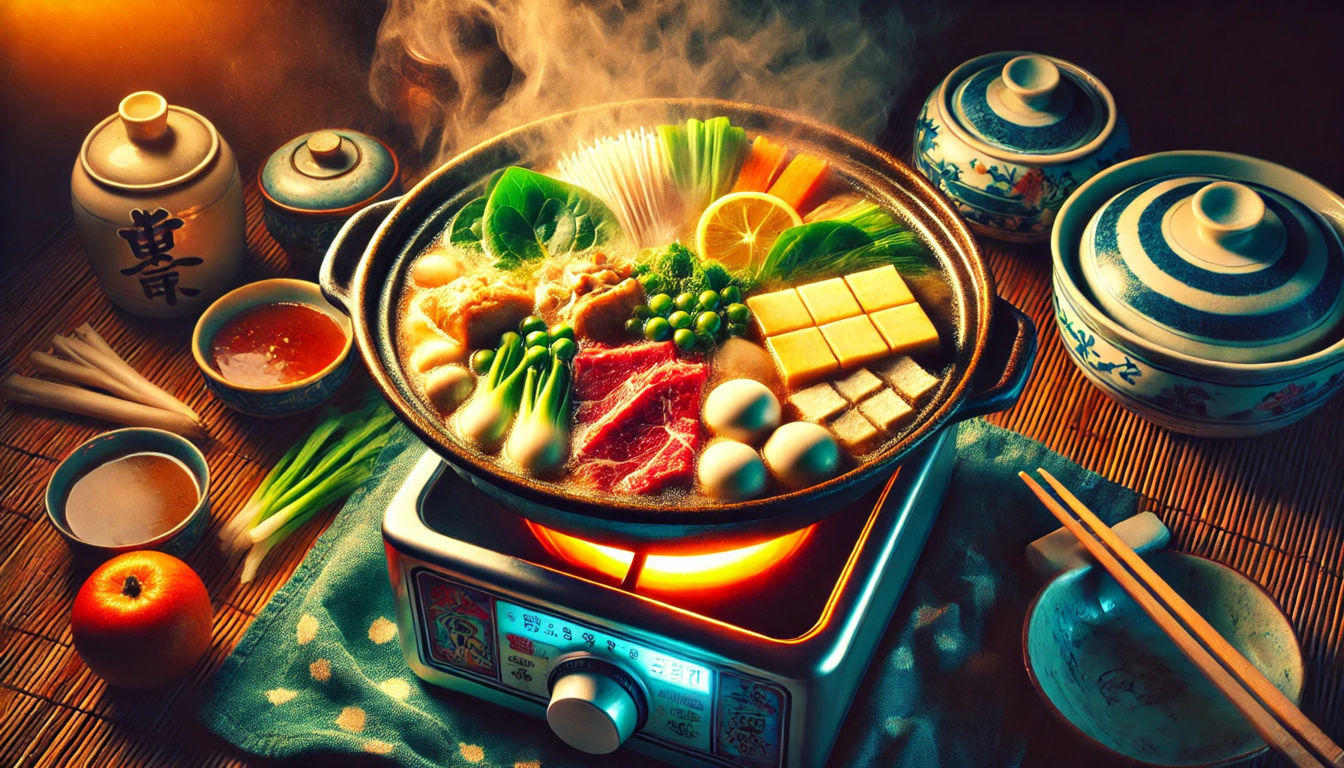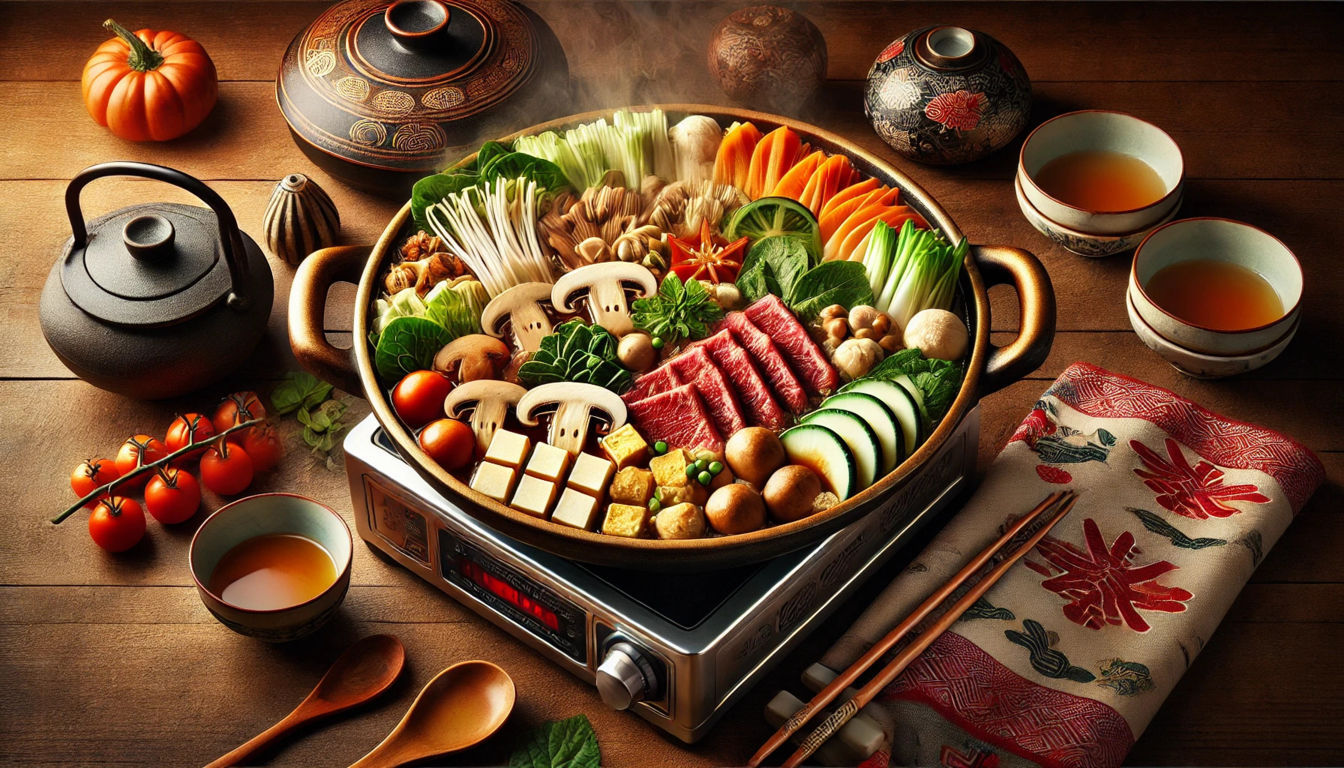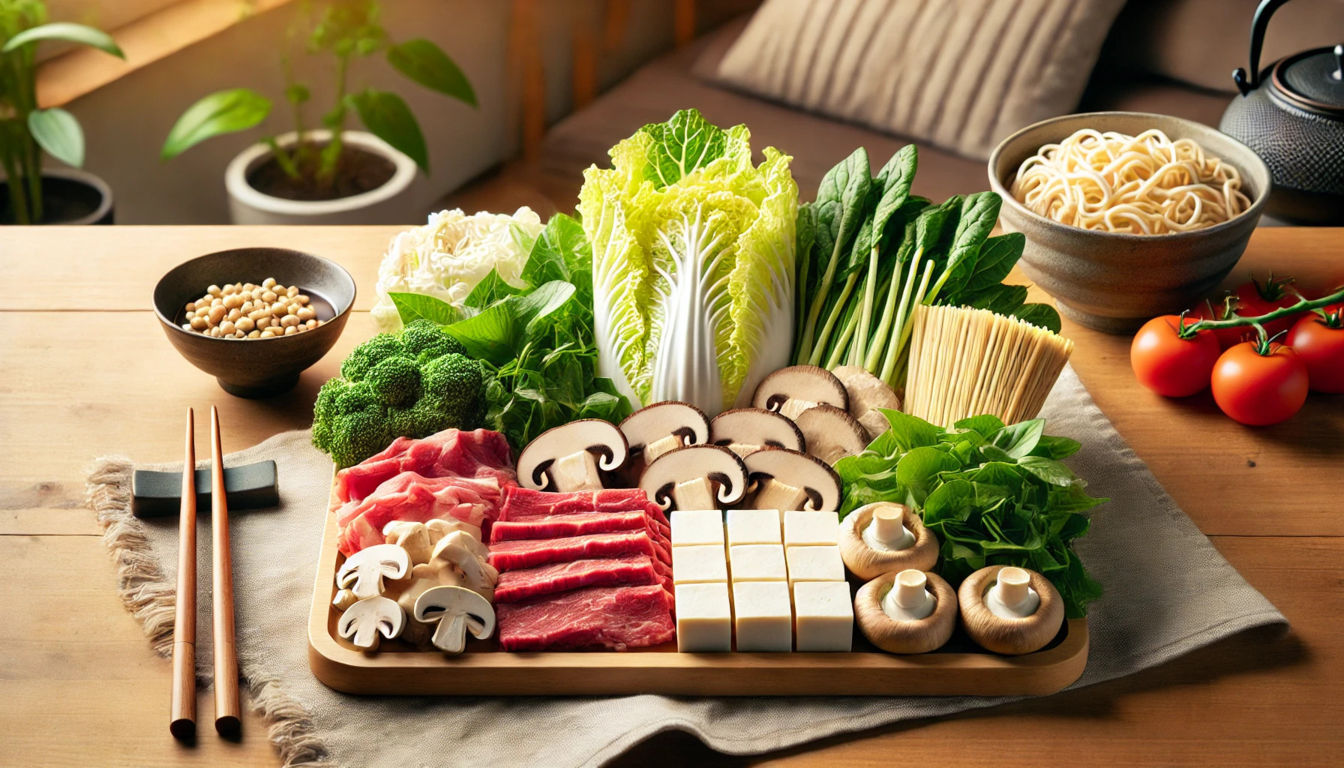How to Make a Traditional Nabe Hotpot: A Step-by-Step Guide
Introduction to Traditional Nabe Hotpot
When it comes to comfort food in Japan, the Nabe Hotpot stands out as a dish that not only warms the body but also brings people together. This communal dish is a staple in Japanese households, especially during the colder months. Traditionally enjoyed in a large pot shared among family and friends, the Nabe Hotpot is as much about the experience as it is about the food. In this guide, I’ll walk you through everything you need to know to create an authentic Nabe Hotpot at home.
Essential Ingredients for Making Nabe Hotpot

The secret to a great Nabe Hotpot lies in its simplicity and the quality of its ingredients. Each component plays a crucial role in building the flavors that define this dish.
Dashi Stock
At the heart of any Nabe Hotpot is the Dashi stock, which serves as the base for the broth. Dashi is typically made from Kombu (dried kelp) and bonito flakes, creating a rich umami flavor that forms the foundation of the dish. To prepare the Dashi, simply soak the Kombu in water and bring it to a gentle simmer, then add the bonito flakes and strain the liquid. This stock will not only flavor the broth but also infuse all the ingredients cooked in it.
Protein Choices
When it comes to choosing the protein for your Nabe Hotpot, the options are diverse and can be tailored to your preferences. Traditional choices include thinly sliced beef, chicken, and tofu. Each protein offers a unique texture and flavor, with beef providing a rich, hearty taste, chicken offering a lighter option, and tofu being a perfect vegetarian choice. The key is to slice the meat thinly, allowing it to cook quickly and absorb the broth's flavors.
Seasonal Vegetables
The beauty of a Nabe Hotpot is its flexibility, particularly when it comes to vegetables. Seasonal ingredients like Napa cabbage, Shiitake mushrooms, and daikon radish are commonly used. These vegetables not only add nutritional value but also enhance the broth with their natural sweetness. I recommend using fresh, seasonal vegetables for the best flavor and texture.
Noodles and Other Additions
To make your Nabe Hotpot more filling, you can add noodles such as Udon or ramen. These noodles are perfect for soaking up the flavorful broth and add a satisfying texture to the dish. In addition to noodles, you can include mochi or other traditional Japanese ingredients to diversify the textures and flavors in your hotpot.
Step-by-Step Guide to Making Nabe Hotpot

Now that we’ve covered the ingredients, it’s time to bring everything together. Making a Nabe Hotpot at home is easier than you might think, and the process is both enjoyable and rewarding.
Preparing the Dashi Broth
Start by preparing your Dashi broth, which will be the base of your Nabe Hotpot. As mentioned earlier, soak Kombu in water and bring it to a simmer. Once the Kombu has infused the water, add the bonito flakes and let them steep for a few minutes before straining the liquid. The result is a clear, golden broth packed with umami, ready to be the canvas for your hotpot.
Preparing and Arranging the Ingredients
While your broth is simmering, it’s time to prepare the other ingredients. Thinly slice your protein and vegetables, ensuring they are bite-sized for easy cooking and eating. Arrange the ingredients on a large platter, grouping similar items together for easy access during cooking. The presentation is important in Japanese cuisine, and arranging your ingredients neatly adds to the overall experience.
Cooking the Nabe Hotpot
Once your ingredients are prepped and your broth is ready, it’s time to start cooking. Bring the Dashi broth to a gentle boil and begin adding the ingredients, starting with those that take the longest to cook, such as root vegetables and firmer proteins. As each ingredient cooks, it releases its flavors into the broth, enriching it further. The key is to simmer gently to avoid overcooking delicate ingredients like tofu and leafy greens.
Serving the Nabe Hotpot
Serving the Nabe Hotpot is as much a part of the experience as cooking it. Traditionally, the hotpot is placed in the center of the table, and everyone gathers around to enjoy the meal together. Each person can pick their preferred ingredients from the pot, dipping them into sauces like ponzu or sesame sauce before eating. The communal aspect of Nabe Hotpot makes it a perfect dish for family gatherings or dinner parties.
Variations of Nabe Hotpot

One of the great things about Nabe Hotpot is its versatility. There are countless variations of this dish, each with its own unique ingredients and flavors.
Regional Variations
Across Japan, you’ll find different types of Nabe Hotpots, each with regional twists. For example, Shabu-shabu is a type of hotpot where thinly sliced meat is swirled in boiling broth, while Sukiyaki features a sweeter soy-based broth. Each regional variation brings something new to the table, offering a fresh take on the traditional Nabe Hotpot.
Modern Twists on Traditional Nabe
In recent years, modern twists on Nabe Hotpot have become popular, incorporating non-traditional ingredients and flavors. For instance, you might find hotpots that include cheese, spicy kimchi, or even tomato-based broths. These contemporary versions of Nabe Hotpot showcase the adaptability of the dish while still honoring its roots.
Tips for a Perfect Nabe Hotpot Experience
Creating the perfect Nabe Hotpot is an art, and a few tips can help elevate your cooking experience.
Choosing the Right Pot and Equipment
The type of pot you use for your Nabe Hotpot is crucial. Traditionally, a clay pot known as Donabe is used, but a sturdy metal pot works just as well. The pot should be large enough to hold all your ingredients comfortably. Additionally, a portable gas stove is ideal for keeping the broth simmering at the table, allowing everyone to enjoy the hotpot at their own pace.
Enhancing the Flavor
To enhance the flavor of your Nabe Hotpot, consider adding additional seasonings or garnishes. A splash of soy sauce, a dash of sake, or a sprinkle of chili can elevate the broth’s flavor profile. Fresh herbs like scallions or Shiso leaves can also add a burst of freshness to the dish.
Pairing Nabe with Beverages
Pairing your Nabe Hotpot with the right beverages can further enhance the dining experience. Traditional Japanese beverages such as sake or green tea complement the flavors of the hotpot, balancing the richness of the broth and the umami of the ingredients. Whether you prefer a warm cup of tea or a chilled glass of sake, the right drink can make your Nabe Hotpot meal even more enjoyable.
Frequently Asked Questions About Nabe Hotpot
When it comes to making and enjoying Nabe Hotpot, a few common questions often arise.
- Can Nabe be made vegetarian or vegan?
Absolutely! You can easily adapt Nabe Hotpot to be vegetarian or vegan by using vegetable-based broths and plant-based proteins like tofu and mushrooms. - How do I store and reheat leftover Nabe?
Leftover Nabe Hotpot can be stored in the refrigerator for up to three days. When reheating, bring the broth to a gentle simmer before adding the leftover ingredients to warm them through. - What are the best side dishes to serve with Nabe?
Nabe Hotpot is often served with simple side dishes like rice, pickles, or a light salad. These sides help balance the richness of the hotpot and add variety to the meal.
You can see customers of Nabe hotpot for more information.
Conclusion
Making a traditional Nabe Hotpot at home is a rewarding experience that combines delicious food with the joy of communal dining. By following this guide, you’ll be able to create an authentic Japanese hotpot that’s perfect for sharing with family and friends. Whether you stick to the classic recipe or experiment with modern twists, the Nabe Hotpot is sure to become a favorite dish in your household.
RESTAURANT LOCATIONS
-
 94 White Bridge Rd Nashville, TN 37205 Hotline: (615) 353-8000
94 White Bridge Rd Nashville, TN 37205 Hotline: (615) 353-8000




